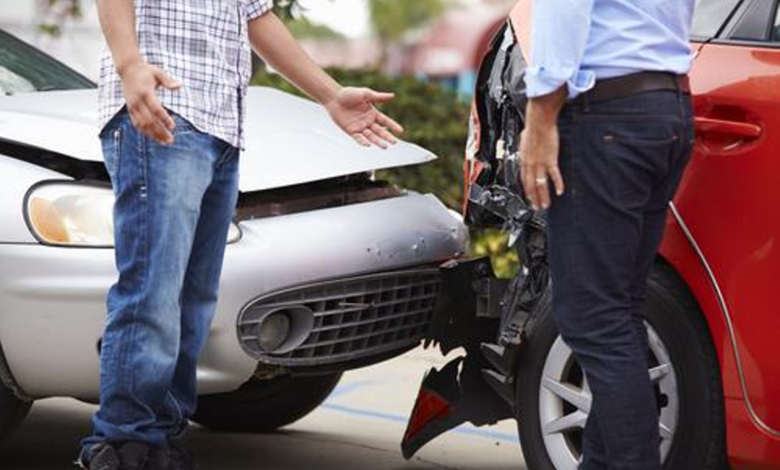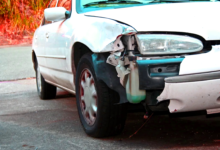How to Determine Fault in a Car Accident: Legal Insights
Car Accident Fault Determination involves analyzing evidence and traffic laws. Learn how to determine liability and navigate the legal process.

After an Car Accident, establishing who was at responsibility is an important step because it affects how insurance claims and legal disputes are settled. Analysing the incident entails looking at a number of factors, such as traffic laws, evidence found at the site, and the participants’ conduct. Determining blame accurately might affect the amount of money you get paid and the legal ramifications for everyone concerned. Determining fault necessitates a careful analysis of the Car Accident relevant causes as well as the applicable legal requirements.
It can be difficult to navigate the complexity of fault determination, particularly when there are several parties involved or the Car Accident facts are not obvious. Every stage is necessary to create a compelling case, from obtaining evidence to analysing traffic legislation. This book will make sure you are educated at every stage of the process by offering insightful information on the legal concepts and useful procedures required to establish fault in an Car Accident.
How to Determine Fault in a Car Accident
Definition of Fault
Fault in a car accident refers to the party responsible for the collision. This responsibility can be attributed based on negligence, traffic violations, or other legal standards.
Legal Liability
Legal liability means being legally responsible for the damages resulting from the accident. This can involve financial compensation for damages, medical expenses, and other losses.
Key Factors in Determining Fault
Traffic Laws and Regulations
Each state or country has specific traffic laws that can influence fault determination. Understanding these laws is crucial for evaluating liability.
Accident Reconstruction
In complex cases, accident reconstruction experts analyze the scene, vehicle damage, and other factors to determine how the Car Accident occurred.
Common Scenarios and Fault Determination
Rear-End Collisions
Typically, the driver who rear-ends another vehicle is at fault, as they are expected to maintain a safe distance.
Intersection Accidents
Fault in intersection accidents is often determined by the traffic signals, signs, and whether a driver failed to yield the right of way.
Lane Change Accidents
Drivers changing lanes must ensure it is safe to do so. Failure to check blind spots or signaling can lead to liability.
Insurance Company Role
Claims Process
Insurance companies assess fault based on the evidence provided, which can include police reports, witness statements, and medical records.
Comparative Negligence
In some jurisdictions, fault is shared based on comparative negligence principles, where each party’s degree of fault affects the compensation amount.
Legal Recourse and Compensation
Filing a Lawsuit
If an insurance settlement is insufficient, you may consider filing a lawsuit. Legal advice can help in navigating this process.
Steps to Take After an Accident
Document the Scene
Take detailed photographs of the Car Accident scene, vehicle damage, and any relevant road conditions. This visual evidence can help clarify the circumstances of the accident and support your claims. Include shots of any injuries sustained, traffic signs, and skid marks if visible. If possible, make notes of any important details about the accident.
Seek Medical Attention
Even if you don’t feel injured immediately, it’s important to see a healthcare professional. Some injuries may not be apparent right away but could become serious over time. A medical evaluation will also provide documentation of any injuries, which is important for insurance claims and potential legal actions.
Keep Records and Follow Up
Maintain thorough records of all related documents, including medical bills, repair estimates, and correspondence with insurance companies and legal professionals. Follow up on your insurance claim and any legal proceedings regularly to stay informed about the status of your case. Keeping organized records will help in resolving the situation efficiently.
Consulting with Legal Professionals
When to Hire a Lawyer
Consider hiring a lawyer if the Car Accident involves significant damages, disputes over fault, or complex legal issues.
Finding the Right Attorney
Look for attorneys specializing in personal injury or Car Accident cases, with a proven track record in handling similar cases.
Preventative Measures
Adhere to Traffic Laws and Regulations
Following traffic laws is essential for safe driving and minimizing the risk of Car Accident. This includes obeying speed limits, traffic signals, and road signs. Compliance with regulations such as yielding the right of way, maintaining a safe following distance, and using turn signals can significantly reduce the likelihood of collisions.
Practice Defensive Driving Techniques
Defensive driving involves anticipating potential hazards and reacting appropriately to avoid accidents. Techniques include scanning the road ahead for potential dangers, maintaining a safe distance from other vehicles, and being prepared for unexpected actions by other drivers. This also means avoiding distractions, such as mobile phones or adjusting the radio, and staying alert to changes in traffic conditions.
Regular Vehicle Maintenance
Keeping your vehicle in good working condition is crucial for preventing accidents caused by mechanical failures. Regular maintenance includes checking and replacing vital components such as brakes, tires, lights, and fluid levels. Ensuring that your vehicle’s safety features, such as airbags and anti-lock braking systems, are functioning correctly can prevent breakdowns and malfunctions that might lead to accidents.
Adjust to Weather and Road Conditions
Adapting your driving behavior to match weather and road conditions is essential for preventing accidents. During adverse weather conditions like rain, snow, or fog, reduce your speed and increase your following distance to account for decreased traction and visibility. Use your vehicle’s headlights appropriately and avoid sudden maneuvers that could cause loss of control.
Avoid Driving Under the Influence
Driving under the influence of alcohol or drugs impairs judgment, coordination, and reaction times, significantly increasing the risk of accidents. To prevent driving impaired, always designate a sober driver if you plan to consume alcohol or use substances that could affect your ability to drive. Additionally, be aware of medications that may have side effects impacting your driving abilities and consult with a healthcare provider if you have concerns.
Read More: The Ultimate Guide to the Top Corporate Lawyers in the Country
Conclusion
Determining who is at fault in an automobile accident is a complex procedure that necessitates a thorough analysis of all the evidence that is available as well as knowledge of the relevant traffic rules. You can compile a thorough picture of what happened by collecting specific details from the accident scene, such as police reports, witness accounts, and photographic evidence. Insurance firms and solicitors can help to further elucidate the issue, guaranteeing that fault is appropriately assigned and that you are compensated for damages and injuries.
It can be difficult to navigate this process, especially when there are several parties involved or disputed claims. On the other hand, effective resolution of these problems can be achieved with fast action, expert supervision, and a full understanding of fault determination. Being knowledgeable and proactive will guarantee that your rights are upheld and that the result accurately depicts the circumstances of the Car Accident, whether you’re dealing with insurance claims or legal actions.
FAQs
How is fault determined in a car accident?
Fault is determined by analyzing evidence such as police reports, witness statements, and traffic laws. Factors include who violated traffic rules or was negligent.
What role do police reports play in determining fault?
Police reports provide an official account of the accident, including details about the scene and statements from involved parties, which can be crucial for determining fault.
Can witness statements affect fault determination?
Yes, eyewitness accounts can provide valuable perspectives on how the accident occurred and help establish the actions of each party involved.
How does insurance impact fault determination?
Insurance companies use evidence and traffic laws to assess fault and determine liability for claims. Their findings may influence compensation and legal outcomes.
When should I consult a lawyer for fault determination?
Consult a lawyer if there are disputes over fault, significant damages, or complex legal issues. An attorney can help navigate the legal process and ensure fair compensation.











